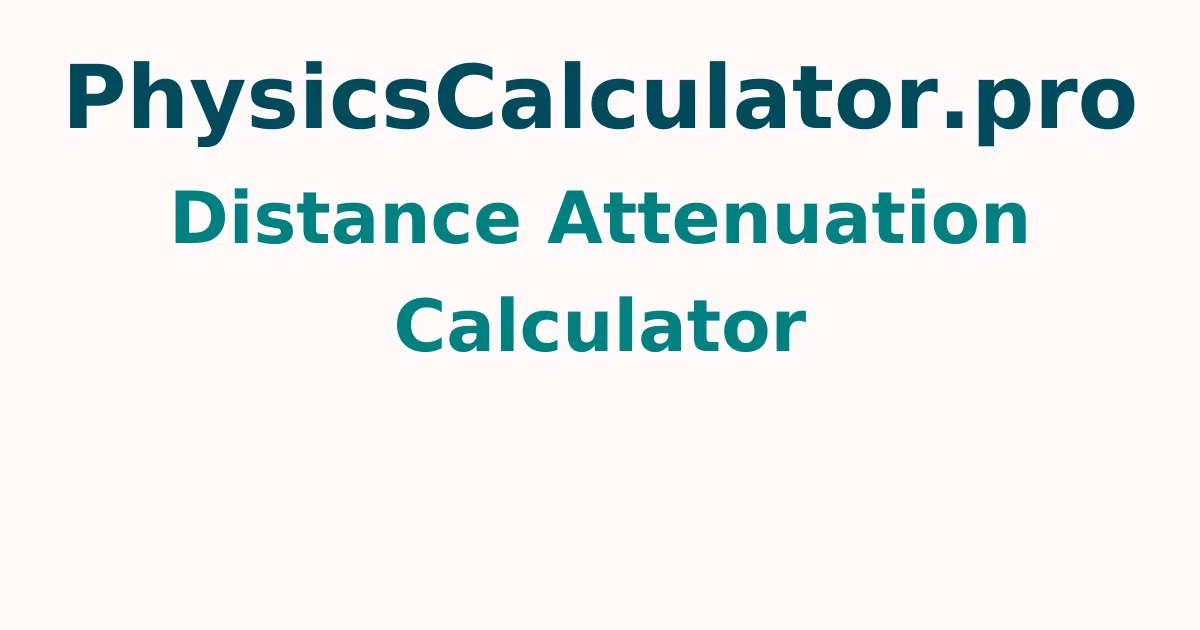Distance Attenuation Calculator
This Distance Attenuation Calculator is a simple tool for determining how sound travels through the air. To receive the Sound Level Difference as an output, enter the distance from the source and the sound pressure level, then tap the calculate button.
What is the SPL(Sound Pressure Level)?
All of the sounds we hear are vibrations flowing through the air (or other mediums). Our ears are subjected to a certain amount of pressure as a result of these vibrations.
Regular units of pressure, known as Pascals, are one technique to quantify this sound pressure. This method is inconvenient. Why? Our hearing threshold - the quietest noises we can hear - is around 0.00002 Pa. It's difficult to express sound levels in thousandths of a part.
This is why, rather than using standard pressure measures, we use decibels, which are sound pressure units. The decibel (dB) scale is logarithmic, which means that a 3 dB rise is equivalent to doubling the pressure in Pascals.
We can estimate the pressure of daily sounds in the 20-100 dB range when SPL is expressed in decibels. The pain threshold is 120 or 130 decibels; for example, a jet plane taking off in your area will generate this amount of sound.
Sound Attenuation Formula
The term "sound attenuation" refers to how the SPL changes when the distance between the sound source and the listener grows. Imagine two residences next to a highway, for example. You may compute the sound level in the other house by measuring the distance between each building and the road, as well as the SPL in one of them.
The formula for sound attenuation is as follows SPL₂ = SPL₁ - 20 * log (R₂ / R₁)
Wavelength = c/f
- Where,
- SPL₁ = Sound Pressure Level at point 1,
- SPL₂ = Sound Pressure Level at point 2,
- R₁ = The distance from the sound source to point 1, and
- R₂ = The distance from the sound source to point 2.
How to Calculate the Sound Pressure Level?
Follow the procedures below to quickly and easily estimate the sound pressure level (SPL) and difference in SPL
- Step 1: Calculate the sound pressure level at points 1 and two points away from the sound source.
- Step 2: Divide the distance from the sound source to point 2 by the distance from the sound source to point 1 using the log function.
- Step 3: Multiply the result by 20 to get the final result.
- Step 4: To find the SPL at point 2, subtract the product from the sound pressure level at point 1.
For more concepts check out physicscalculatorpro.com to get quick answers by using the free tools available.
FAQs on Distance Attenuation
1. What is the definition of distance attenuation?
The way a sound level decreases when a listener moves away from a sound source is known as distance attenuation. Like ripples on a pond, the region over which sound is dispersed grows as it travels from the source.
2. How much does sound pressure drop as you get further away?
According to the inverse square law, the sound pressure level reduces by approximately 6 dB for every doubling of distance from a point source.
3. Why do sounds become quieter as they travel further?
The dipole moment is determined by multiplying the distance between hydrogen and oxygen atoms by the charge difference between them. The net dipole moment is then calculated using the angle between the atoms. The bond moment of the O-H bond is -1.5D, while the angle generated by a water molecule is 104.5°.
4. What effect does distance have on sound frequency?
Sound's frequency does not decrease with distance, but it does decrease with increasing distance, implying that it, like light, undergoes the doppler shift.
5. Is the decibel level affected by distance?
There is no frequency dependency. There is no reduction in noise (sound reduction) or decline in sound per metre. Each doubling of distance results in a 6 dB decline in sound volume.
